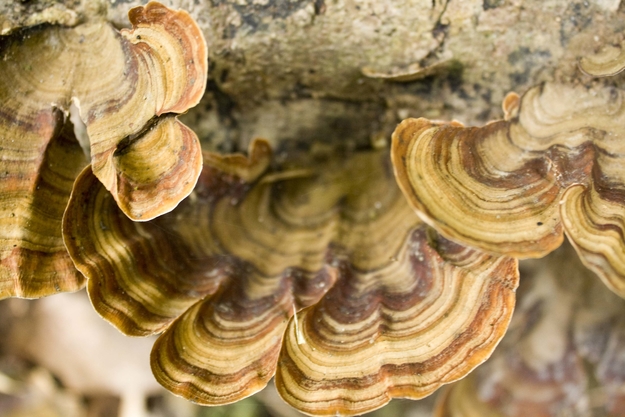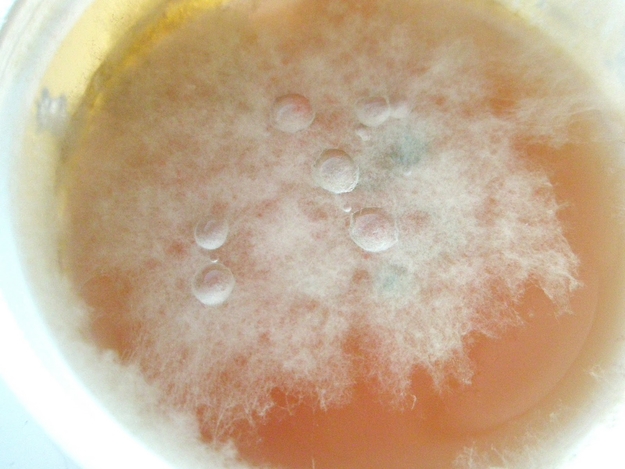Cleanroom
A cleanroom is an environment, typically used in manufacturing or scientific research, that has a low level of environmental pollutants such as dust, airborne microbes, aerosol particles and chemical vapors. More accurately, a cleanroom has a controlled level of contamination that is specified by the number of particles per cubic meter at a specified particle size. To give perspective, the ambient air outside in a typical urban environment contains 35,000,000 particles per cubic meter in the size range 0.5 μm and larger in diameter, corresponding to an ISO 9 cleanroom, while an ISO 1 cleanroom allows no particles in that size range and only 12 particles per cubic meter of 0.3 μm and smaller
Ethnomycology
This is the study of the historical uses and sociological impact of fungi (a.k.a. "fungi lore"). It is often considered a subfield of ethnobotany or ethnobiology. Although in theory the term includes fungi used for such purposes as tinder, medicine (medicinal mushrooms) and food (including yeast), it is often used in the context of the study of psychoactive mushrooms such as psilocybin-containing mushrooms. More about ethnomycology can be found here.
Flowhood
A laminar flowhood is a piece of equipment which makes sterile working procedures in mushroom cultivation easier and reliable.
A flow hood consists of a coarse pre-filter, a blower and a very fine filter, the so called HEPA (High Efficiency Particulate Air) filter, which filters particles from the air to a high degree.
This makes the air coming out of the HEPA filter nearly sterile which allows doing transfers in this stream of sterile air without worrying about contaminants entering from the air and contaminating the cultures.
Fungus
A fungus is a member of a large group of eukaryotic organisms that includes microorganisms such as yeasts and molds, as well as the more familiar mushrooms. These organisms are classified as a kingdom, Fungi, which is separate from plants, animals, and bacteria.
Most fungi are really tiny, and only become noticeable when they fruit, either as mushrooms or as molds. They play an important part in the decomposition of organic matter.
used in foods:
used as a direct source (mushrooms), and in fermentation of various food products, such as wine, beer and soy sauce.
used in medicine:
used for the production of antibiotics
Hydrophobins
Hydrophobins are surface active proteins (~ 100 amino acids) produced by filamentous fungi. They have a role in fungal growth as structural components and in the interaction of fungi with their environment. They have, for example, been found to be important for aerial growth, and for the attachment of fungi to solid supports. Hydrophobins also render fungal structures, such as spores, hydrophobic (water-repellent).
The biophysical properties of the isolated proteins are remarkable, such as strong adhesion, high surface activity and the formation of various self-assembled structures.
In The Netherlands prof. Han Wösten is working on the subject of fungi-excreted proteins, as is Elsa Berends, who will be speaking at Ignite Amsterdam 10.
Mushroom: the fleshy, spore-brearing fruiting body of a fungus
A mushroom is the fleshy, spore-bearing fruiting body of a fungus, typically produced above ground on soil or on its food source. Like all fungi, mushrooms are not plants and do not undergo photosynthesis.
Mushroom" describes a variety of gilled fungi, with or without stems, and the term is used even more generally, to describe both the fleshy fruiting bodies of some Ascomycota and the woody or leathery fruiting bodies of some Basidiomycota, depending upon the context of the word.
Mycelium: the vegetative (essential) part of a fungus
Mycelium is the vegetative part of a fungus, consisting of a mass of branching, thread-like hyphae. Hypha is a long, branching filamentous (thin in diameter; resembling a thread) structure of a fungus.
It is the out-of-sight (and often forgotten) mycelium that is the essential part of the organism (fungus). The mycelium is there throughout the year, in the soil or in the log, and is not a static object. It grows and may die. It reacts to varying environmental conditions and other organisms, producing different growth forms or structures, depending on circumstances.
More about Mycelium: http://www.anbg.gov.au/fungi/mycelium.html
Mycology
The discipline of biology devoted to the study of fungi is known as mycology, which is often regarded as a branch of botany, even though genetic studies have shown that fungi are more closely related to animals than to plants.
Perlite
Perlite is made of small pieces of extremely porous volcanic rock. It is used to keep the humidity high. Cover the bottom of the grow chamber with perlite, and spray it with some water to maintain humidity.
Psilocin
Psilocin is one of the two active compounds that appear in magic mushrooms. The other active compound is psilocybin. These alkaloids are closely related to each other and are regarded as psychedelics.
Spores
A reproductive structure. Part of the life cycle of fungi.
Compared to seeds they have very little stored food resources. They can survive in very unfavorably conditions. When favorable, spores can develop into new organisms. Haploid spores produced by mitosis are used by many fungi for asexual reproduction.
Multi Spore
A multi strain culture is a mushroom culture that contains an array of spores that could each develop into different, unique mushrooms with their own traits.
Whenever a print or spore syringe is used to inocculate the substrate, it is called a multi strain culture. The 'different' spores will germinate inside the substrate, and form mycelium. A multispore culture can be the reason that many mushrooms in the same flush have different looks and develop at a different growth rate.

